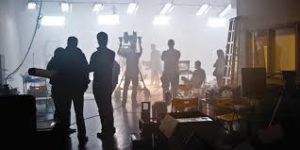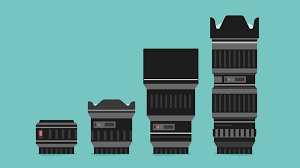
Check List : PRE/SHOOT/POST
Jul 02 2019
Important check list

The cinematographer’s responsibility lies in three stages of film production; that is from the starting
of the film to its release. In each stage, the expertise of DoP’s is useful to bring the performance
required to support a feature film production.
PRE-PRODUCTION
Listen to the idea of the film.
Analyze story structure / characters.
Research accordingly like period, time etc…
Design style, visualize approach.
Discussion with director on new ideas.
Coming to an agreement with director.
Discuss budget requirements.
Discuss and come to an agreement with Art director.
Approve locations / check local weather conditions.
Discuss and approve set plans.
Detail and approve props, vehicles, costumes etc…
Visit camera rental places / Explore new equipment / Learn how new equipment works.
Look for special equipment or techniques.
Discuss with C.G team for vfx.
Design lighting set up plan and rigging for set and locations with gaffer and key grip.
Choose and approve crew, camera equipments, DI work station, lab, and visual-effects crews.
Visit if sets are under construction.
Visit to all locations and stages and co ordinate with all the departments to discuss
requirements.
Approve set or location colours and textures.
Approve costume colours and textures.
Devise shooting plan with director and make a list of equipment for production manager and
indicate number of days required.
Work with assistant director on shooting schedule (order of and days required for each scene).
Estimate and order hard disk drive (type, size and quantity).
Approve Assistant cinematographers working for the film.
Assist other departments in getting required equipment, manpower and tests.
Maintain regular contact with other departments.
TEST SHOOT
for look
for lab/ DI
for lighting of Lead actors
for camera and lenses

SHOOTING Check list
Camera.
Lens & mount type (EF OR PL).
Matte box & filters.
Batteries.
Battery charger.
In- camera / external microphone.
Tripod, base plate, pan& tilt head.
AC main adapter.
Camera umbrella.
Lens cleaner kit.
Focus kit / white pencil.
Hard disc drive.
Memory card (camera).
Card reader.
Laptop.
Video assist monitor and cables.
Hi hat and other camera mount.
Trolley/crane/special grips.
Weather proof covers / black cloths / skimmer cloths. Lighting kit with stands, cables, flags etc…
Reflectors.
Generators.
Check above all equipments in order with assistant cameraman.
Go through the call sheets and shooting order of the day’s work.
Blocking.
Watch rehearsal of scene to be shot.
Devise shot list with director (coverage).
Choose lens and composition; show to director for approval.
Make sure composition and movement fulfil scene task.
Work out mechanical problems with camera operator, assistant camera, dolly and crane grips.
Set any camera-movement cues.
Place stand-ins and rehearse, fine-tune.
Ensure proper coverage of scene for editor.
Work with assistant director on background action.
Lighting – Design lighting to show set/ location to best advantage relative to story, style and
dramatic content. Make sure mood and tone of light help to tell story.
Design light for minimum changes for other set up shots to follow.
Set photo flood lights (dimmers, spot lights, colour changes and any practical lamps) if
required.
Set any additional cameras required for shots.
Double-check safety with all concerned.
Show shot to director to make any final changes.
Get actors in for final mark for lights and camera movements.
Teach beginning actors movie technique (hitting marks, size of frame, lenses, etc…).
Shoot the scene.
Approve for correct take with the director.
Look for video playback.
Move to next set-up.
Complete day’s work.
Discuss first set-up for the next day.
Ensure that camera, lights, and grip crews for next day set up.
Take care of any future or ongoing production issues.
Visit production manager and producer at the end of the day.
Check with DIT recorded images are being transferred safely.
View previous day’s work in projected rushes with director, producer, editor and camera
crew.
Discuss and approve rushes, if any go for re shoot.
POST PRODUCTION
Discuss with editor and director. Be aware of delivery dates for all post-production.
Start DI- Color Grading.
Grade and approve songs and trailer for audio function, theatres and television.
Approve all optical and digital effects composites.
Final grade the picture.
Show to director for OK.
Approve for final dpx rendering and send for mastering.
Watch first copy with Director and production crew.
Supervise and approve film or digital original transfer to electronic media / DVDs.

– CJ Rajkumar
Author/Cinematographer
